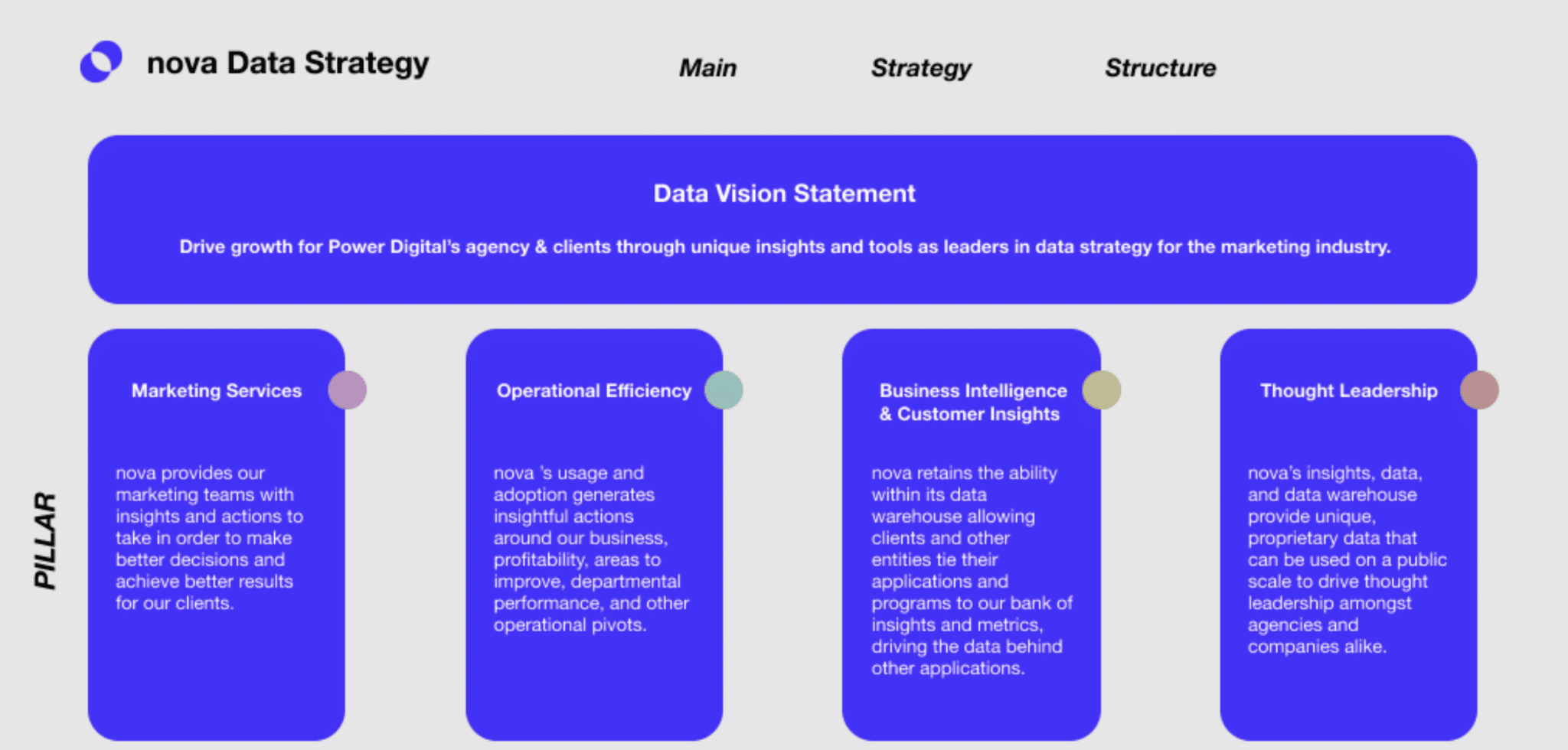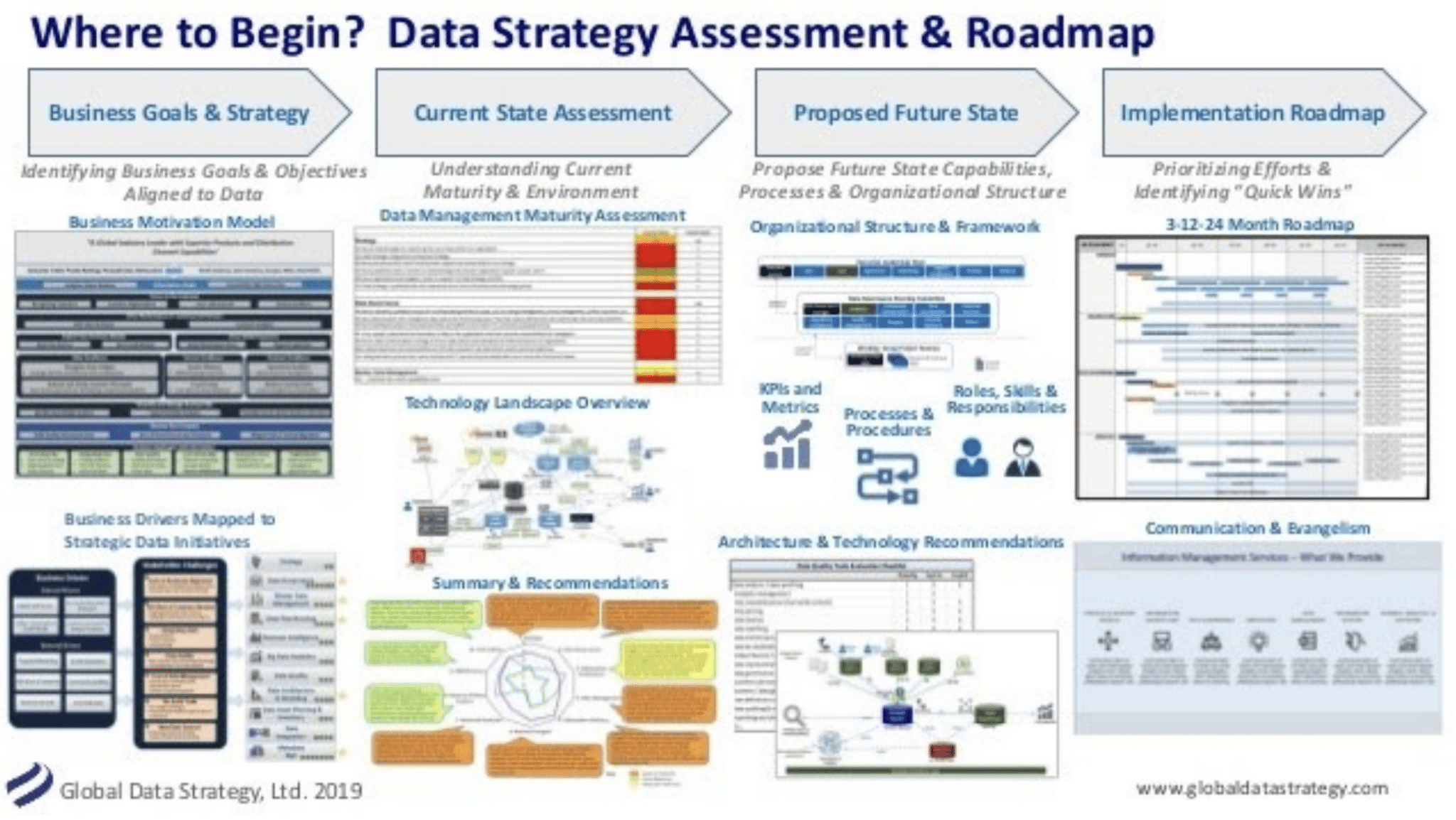How to Build a Strategy with Data

Introduction

If you analyzed your business today, how many data points would you say you captured? How many did you actively collect? How many were analyzed? Biggest question: what did you do with the data?
In today’s digital world, not only are we overwhelmed by the different platforms, tools, and interactions that create data points, but now that world is turned on its head as changes become more and more of a reality. As discussed in our article on first-party data, Google and Apple are making waves with their deprecation of cookies and pixels, forcing businesses to play their hand in collecting data, through their own means or through others’ adapted methods.
In this article, I will cover the second step after collecting data: what to do with it when you have it. Power Digital has had to adapt and identify other methods of data collection and usage, and I am glad we did! Not only will these changes be something you need to do, but they should be something every business owner wants to do.
Building a business strategy from the data you collect is more important than ever, and can help you have a leg up on your competitors.

What is a data strategy, and why does it matter?
A data strategy is a mission or vision you have as a business to utilize data you collect first and foremost.
Once you have a mission, your data strategy outlines your methods, business goals, and objectives to fulfill that strategy. With data overload, organization is key, and laying out a data strategy is the first step to a long journey.
Without clearly stating your data strategy, forcing business objectives and collection will become messy. By clearly defining it as you would a business plan, your data strategy becomes another arm of your business.

All this being said, an effective data strategy also allows you to centralize your efforts. It’s very common to adopt too many technologies or platforms for data collection and analysis, blurring the lines of accuracy in your data and wasting money.
With a clearly defined data strategy, you will be able to:
- Maintain privacy and compliance as it applies to personal data
- Find efficiencies within your organization
- Provide better results to your customers
- Analyze and discover new trends or insights useful to your business or your customers’
- Back your decisions with more data and find better business outcomes
How to Build a Data Strategy
When building the Power Digital data strategy, the first question I asked myself was, “What problems are we trying to solve?” In doing so, you uncover the true purpose behind your strategy. The key here is not to look to collect as much as you can but to identify what you need to collect in order to fulfill your objectives.
Here are the questions to ask yourself or your team:
- What problem(s) am I trying to solve?
- What data do I need to collect?
- Where does my data come from?
- How will I collect my data?
- Am I staying compliant in collecting and analyzing this data?
- How will I analyze my data?
- Who owns my data — do I, does the source, etc.?
- Who will spearhead my data strategy?
- How will I share this data with the public or my team?
- How does this data affect my internal operations?

To draw from our digital marketing firm’s experience, we set our data strategy up on four pillars:
Marketing Services
How do we provide our clients with the best results by combining knowledge and data in an actionable way?
Operational Efficiencies
What organizational data helps us make decisions in how to run our business?
Business Intelligence
What data would be most useful to our clients, and how do we make it specific to them in an easy to “connect” with way?
Thought Leadership
What data allows us to have a voice in the industry and provide insights others don’t have?
I share this method with a successful data strategy because we have found it extremely useful in creating a roadmap that helps us achieve our business goals. By drawing pillars to your data strategy, you begin to find strong objectives related to each pillar. Clearly defining these pillars and the questions they answer organizes, centralizes, and optimizes just how you use your data.
Here is a brief sample of our data strategy one sheet:

How will I collect my data?
From a technical perspective, it’s also vital to outline or diagram just how you collect data. In our same data strategy, we clearly define this technical process and would urge all readers to do the same:

Other Great Resources
Bernard Marr has a great data strategy template we took a lot of inspiration from. This is a great first step to outlining the pillars.

In the same vein – Dataversity provides a comprehensive step-by-step for creating a data strategy.

Things to Stay Away from (the Don’ts of Data Strategy)
- Don’t subscribe to every analytics or CDP (customer data platform) you can. This only adds more chaos to your data strategy and does not help you consolidate your sources.
- Try not to tinker. Tinkering is great at first, but the more you try to run small reports or insights, the more you lose sight of your pillars or main vision.
- Don’t fudge the data. Always stick to the data. Don’t try to paint your own picture by facade or fudging the numbers in the process.
- Don’t forget the business case or context. Many times data is presented with a “loose” approach. It’s easy to present data, it’s more valuable to provide content and insights to go with it.
- Don’t forget compliance or privacy. Now is the best time to brush up on privacy laws. Collecting data is important, but doing it illegally can be detrimental to your business.
Closing
Developing a successful data strategy for your business is more imperative now than ever. Doing so allows you to have a leg up in a changing world and clearly define your objectives for what is essentially a new arm to your business. By following some of our questions to ask yourself above or the resources provided, you can develop an effective data strategy and create an actionable roadmap for your own business. Once established, completing these initiatives opens up an entirely new world for you and your business through just the collection and analysis of data.
Still not sure how to develop your own data strategy? Power Digital would love to help! Please contact john@powerdigitalmarketing.com for a free consultation.
Our Editorial Standards
Reviewed for Accuracy
Every piece is fact-checked for precision.
Up-to-Date Research
We reflect the latest trends and insights.
Credible References
Backed by trusted industry sources.
Actionable & Insight-Driven
Strategic takeaways for real results.










